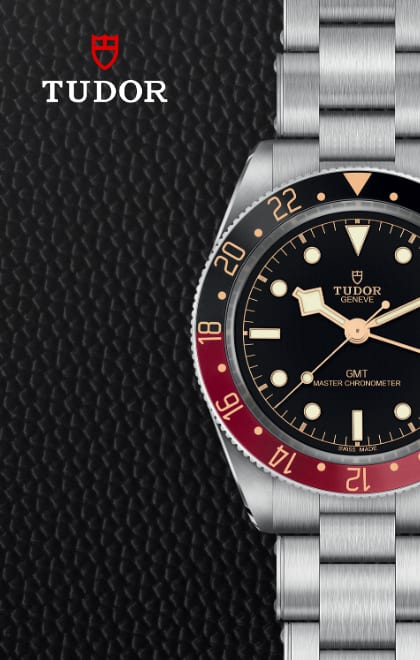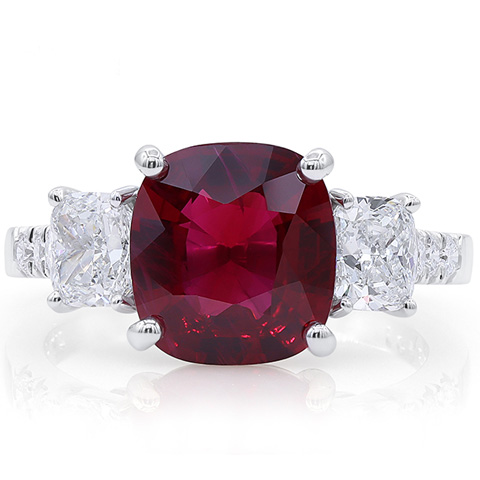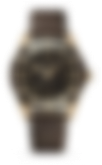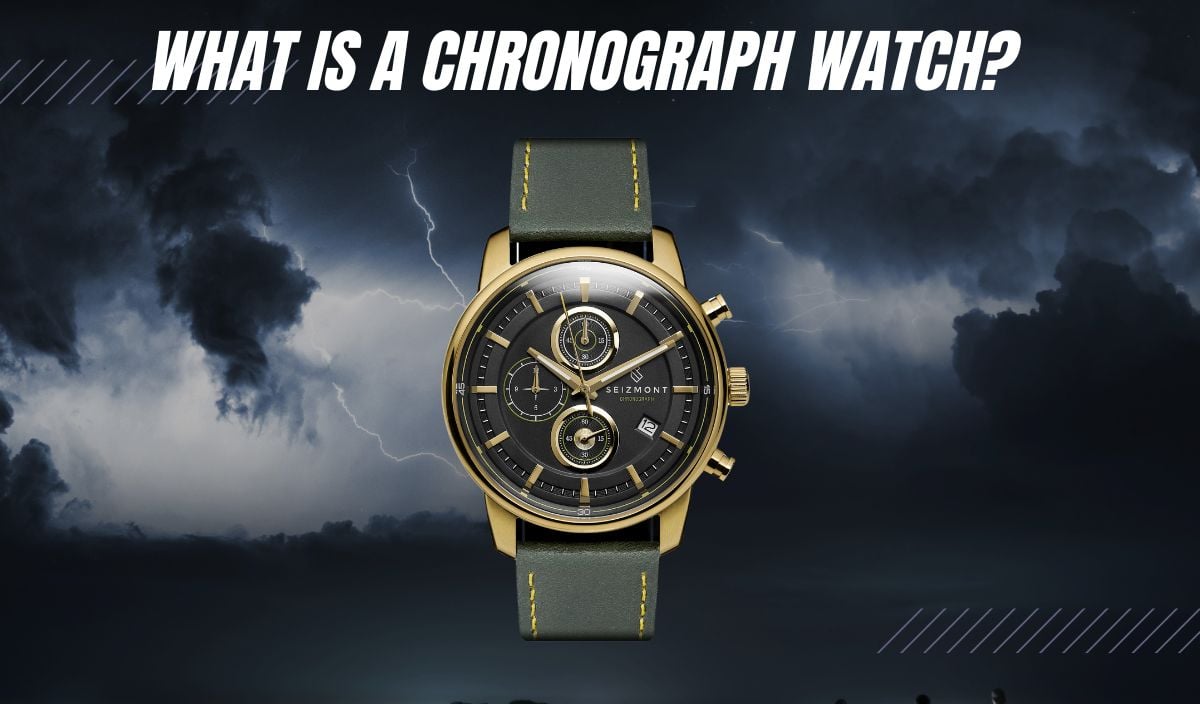
What is a Chronograph Watch?
Chronographs are among the most iconic watches in history and are perennially popular among enthusiasts, from newcomers to seasoned collectors. They are multifunctional timepieces that blend form and function, combining varying case shapes, sizes, buttons (“pushers”), and colors with intricate movements that provide accurate current time as well as the precise timing of events ranging from Formula 1 racing to boiling the fettuccine.
“Chronograph” is derived from the Greek language and means “time recording”. Chronographs indicate both the current time and the elapsed time of an event from start to finish, but they are much more than a mere “stopwatch”.
As we shall see, certain types of chronographs also record split times (e.g., a single lap of a multi-lap race) and calculate the speed of a moving object, the wearer’s distance from an event that is seen and heard (e.g., a lightning strike and thunder), pulse rate, and even a pilot’s fuel consumption.
In this article, I will cover chronograph history, how they work, practical uses, types, and the differences between chronographs and chronometers, and discuss five popular models.
The Birth of the Chronograph
There are several key figures and events that figure prominently in the birth and growth of chronographs.
Most watch historians—as well as the Guiness Book of World Records—credit French watchmaker Louis Moinet with the “World’s First Chronograph” in 1816. Its design was similar to a modern handheld stopwatch with start-stop-reset functions and was used for astronomical purposes. Moinet achieved an amazing accuracy of 1/60th per second and 30Hz or 216,000 beats per hour.
In 1821, Nicolas Mattheiu Rieussec was the first to use the term “chronograph” to describe his “Chronograph with Seconds Indicator”, which he designed for the more practical and commercial use of timing horse races.
The device was housed inside a wooden box and allowed for separate times to be recorded when the user triggered a hand to leave an ink impression on paper, thus becoming the first literal “timer writer”.
Longines launched the first chronograph wristwatch in 1913. It featured a monopusher embedded within the crown and was accurate to 1/5th of a second. Breitling followed in 1915 with the first chronograph with a separate pusher for start-stop-reset situated at 2 o’clock and again in 1934 with the first dual pusher chronograph.
The year 1969 marked not only the “Race to the Moon” but also the “Great Automatic Chronograph Race”, which featured competitors Seiko, Zenith, and a team of collaborating Swiss firms consisting of Breitling, Buren-Hamilton, and Dubois-Dépraz vying for the distinction of the first self-winding chronograph movement. Zenith announced their success in January and named the movement “El Primero” or “The First”. The Heuer, et. al consortium and Seiko announced later but still beat Zenith to market to the general public.
Chronographs have continued to evolve with new designs, more accurate movements, and increased functionality and remain a popular and practical watch choice to this day.
How Chronograph Watches Actually Work
Chronographs encompass a broad range of designs, types, and functions, but there are a few elements that are common to almost all models.
Mechanical chronographs use either a cam or column wheel design to achieve their multifunctional capabilities. Either type of movement allows for the pushers (these days, usually dual ones placed at 2 and 4 o’clock) to perform start-stop-reset functions.
A typical analog chronograph will have a centrally placed timing seconds hand that starts when pressing the top (2 o’clock) pusher. The timing hand stops when the user presses the top pusher again. To reset, the user presses the bottom (4 o’clock) pusher.
Chronograph dials contain registers, also known as “subdials”, that display information such as running seconds, elapsed hours, minutes, or fractions of seconds. There may be additional indices and markings that allow measurement of distance (“telemetry”) or physiological data such as pulse rate (“pulsometry”).
Bezels are also an important component of chronographs, and the most common display is a tachymeter that measures the speed over a known distance, either in miles per hour (mph) or kilometers (kph). Other bezel options include pulsometry and even ones with slide rule functions.
It is important to note that while many popular and historically important chronographs are largely mechanical and analog, highly accurate quartz movements with digital-only displays or analog-digital hybrids, as well as the ubiquitous “smart watches”, are popular and affordable options as well.
Practical Chronograph Uses
Chronographs are used in a wide range of timing tasks associated with various sporting events, such as track and auto racing, as well as military, aviation, diving, and medical applications. Even more mundane timing needs, such as how long to cook an item in the kitchen or calculating the morning commute length, make chronographs useful for almost everyone.
Unique Types of Chronographs
There are “sub-specialty” types of chronographs that can “fine tune” timing capabilities. Two important ones are split seconds and flyback chronographs.
Split Seconds Chronograph
Split seconds chronographs time a series of successive events such as laps in a track or auto race. Another name is rattrapante which is French for “catch up”. A split seconds chronograph is equipped with two timing seconds hands that overlap at the 12 o’clock position before timing starts.
When the user engages the top pusher to start timing an event, both timing seconds hands start to run together. Pressing the bottom pusher stops the rattrapante hand, which is usually on the bottom, to record the split time while the other timing seconds hand continues to run and show total elapsed time.
When the bottom pusher is pressed again, the split timing seconds hand “catches up” to the other one and continues with it unless the bottom pusher is pressed again to record another split
Some split seconds timing chronographs only contain a single timing seconds hand. For instance, a MoonSwatch has a bottom pusher that can be engaged after the start to record a split time.
The elapsed time continues to run unseen. When the bottom pusher is pressed again, the timing seconds hand jumps forward to show the total elapsed time again—a “rattrapante lite”, if you will.
Flyback Chronograph
A flyback chronograph allows the user to stop the timing seconds hand, reset to zero with a counterclockwise movement, and immediately start timing again with a single press of a pusher. This is in contrast to a standard chronograph, which requires separate pushes to stop the timing seconds hand, reset it to zero, and restart it.
Flyback chronographs were designed initially for pilots who needed accurate and rapidly timed multiple intervals for complex maneuvers and other various flight tasks. The movement of the hands appears simple, but the mechanisms are very complex testaments to the art and craft of watchmaking. Flyback chronographs are popular among collectors who are fascinated by and appreciate their close ties with aviation and military history.
Chronograph Watches vs. Chronometer Watches
Even though chronographs and chronometers are often confused, the distinctions between the two are relatively straightforward. Chronographs are multifunctional tool watches that combine traditional timekeeping with a stopwatch function. A chronometer, on the other hand, is primarily concerned with precise timekeeping and designed to be accurate within a small seconds per day interval.
Chronometers gain certification by undergoing rigorous testing in various positions and temperatures by certifying bodies such as the Official Swiss Chronometer Institute (COSC), whose standard is +6/-4 seconds/day. The Swiss Federal Institute of Metrology (METAS), following COSC certification, awards its “Master Chronometer” designation for watches that achieve a +5/-0 seconds per day standard. Some brands have their own in-house testing and certification, such as Rolex’s +2/-2 seconds per day “Superlative Chronometer” distinction.
There can be an overlap between the two: a chronograph, if it meets the appropriate accuracy standards, can also be designated a chronometer.
Top 5 Chronograph Watches on Exquisite Timepieces
Here are 5 popular chronographs available on the Exquisite Timepieces website:
Omega Speedmaster Moonwatch Professional Master Chronograph (ref. 310.30.42.50.01.002)
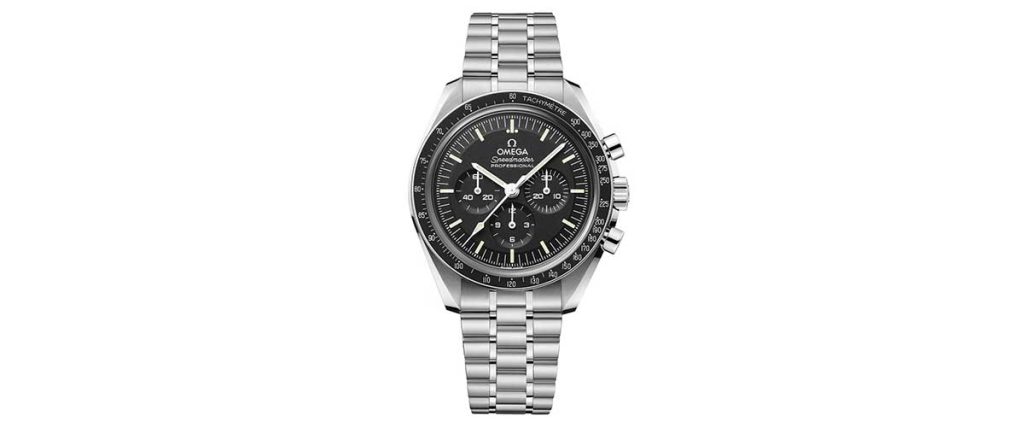
The Omega Speedmaster Moonwatch Professional Master Chronograph is famous for its NASA certification and recognition as “The First Watch Worn on the Moon” by the Apollo astronauts. This more refined modern reference features a 42mm stainless steel asymmetrical case, matching stainless steel bracelet, and a “double sapphire sandwich” crystal design that crisply displays both the highly legible black dial and subdials on the front and the intricate and beautiful manual wind Caliber 3861 movement through the caseback.
It has a bezel tachymeter and a 50-hour power reserve, and it is a perfect example of a chronograph that is also a certified (METAS) chronometer. You may not be able to own a moon rock, but it is possible to get hands-on with an iconic chronograph and important piece of space history.
Blancpain Fifty Fathoms Bathyscaphe Chronographe Flyback (ref. 5200-0130-B52A)
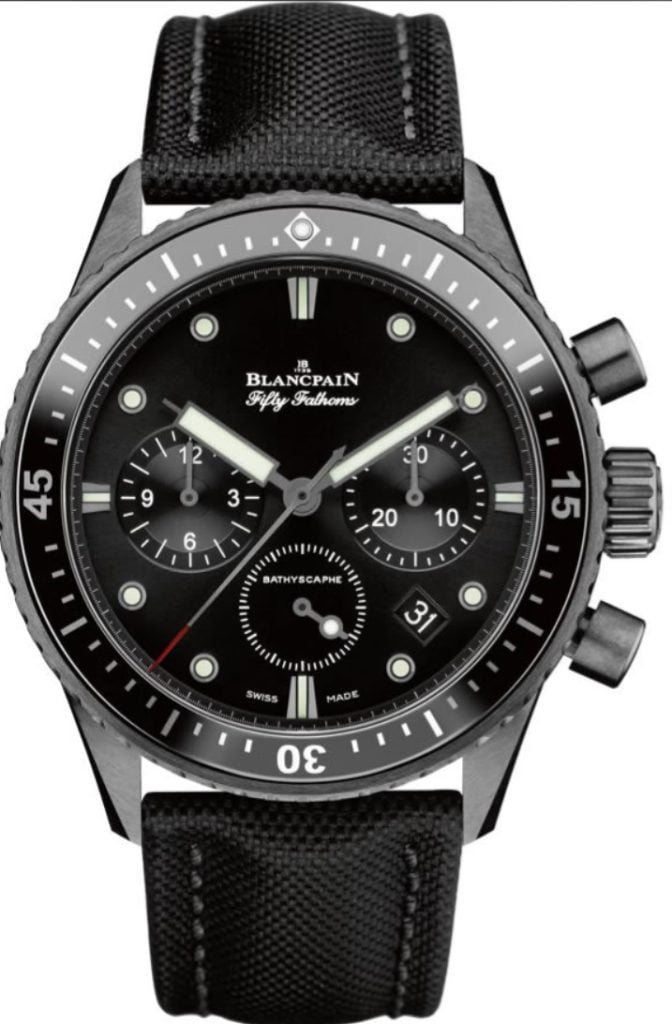
The Blancpain Fifty Fathoms, originally introduced in 1953, is cited by many as the first modern diver’s watch. This chronograph reference has a 43.6mm diameter black ceramic case, a rotating ceramic bezel, a black dial with 60 seconds, 30 minutes, and 12-hour subdials, and a date window at 4:30.
It has a sapphire display caseback, showing off the Caliber F385 movement with a 50-hour power reserve and flyback chronograph capability. Despite the presence of pushers, it still maintains an impressive 300 meters of water resistance in keeping with the brand’s storied diver tradition. It is an excellent choice for those who want a watch with a lot of stylish and imposing, yet paradoxically minimalistic, wrist presence combined with impressive timekeeping and tracking credentials.
Hublot Big Bang Unico King Gold Ceramic 42mm (ref. 441.OM.1180.RX)
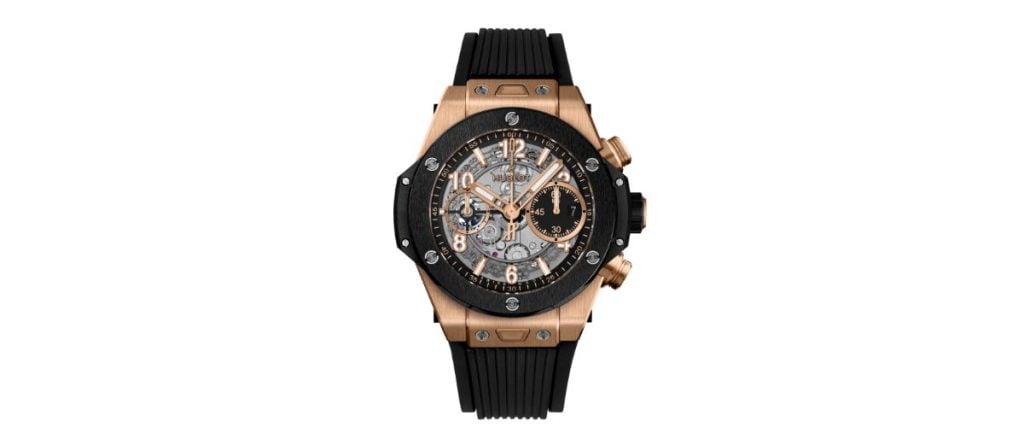
This chronograph features a 42mm diameter (“compact” by brand standards and “unisex according to some) 18K gold, satin-finished, “King Gold” case with polished edges and pushers, combined with a satin-finished ceramic bezel with polished edges, all held together with titanium screws.
The skeletonized dial reveals the 72-hour power reserve, in-house Caliber UNICO Hub1280 autonomic column-wheel flyback chronograph movement, and the rotating date wheel. There are two subdials at 3 and 9 (60 minutes and 60 seconds) with a date window embedded within the subdial at 3. The strap is black structured lined rubber with an 18K gold deployant clasp. A guaranteed conversation starter, this “Big Bang” of a chronograph lives up to its name.
Czapek Faubourg de Cracovie Tao
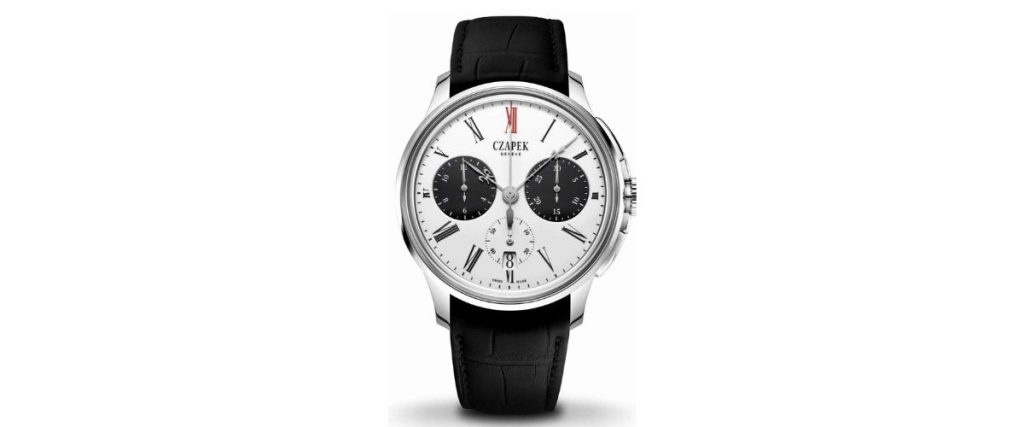
While the name may fly a little under the radar, Czapek is nevertheless a tradition-rich brand dating back to the arrival of Polish watchmaker François Czapek in Geneva, Switzerland, in 1832. The company’s Faubourg de Cracovie Collection Tao model is a limited-edition (18-piece) chronograph that showcases a black and white (“panda”) Grand-Feu enamel dial and is powered by the COSC-certified Caliber SXH3 movement.
The case is stainless steel with a 41.5mm diameter and houses elongated pushers that do not protrude but instead hug and conform very closely to the case, creating a unique and pleasing chronograph silhouette. It is high-end, dressy, and rare. If you own it, you’re probably the only one in the room wearing it.
H. Moser & Cie. Streamliner Flyback Chronograph Blue dial (ref. 6907-1200)
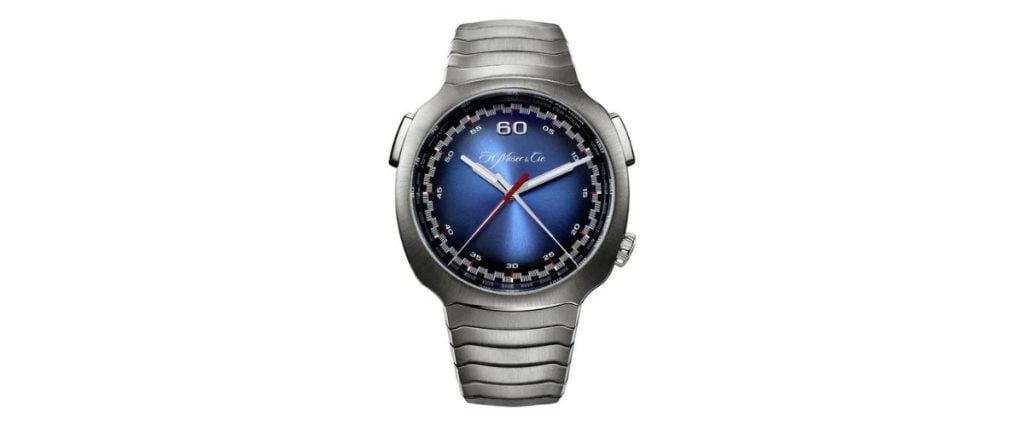
H. Moser & Cie was founded by Swiss watchmaker Heinrich Moser in St. Petersburg, Russia, in 1828. The “Streamliner” is sleek and modern with minimalistic and fluid lines. Its 42.3mm stainless steel case has pushers at 10 and 2 and integrates seamlessly with its stainless steel bracelet.
The dial has a transparent logo, no subdials, and is a distinctive “Funky Blue Fumé” with 4 centrally placed hands and a tachymeter scale on the inner flange. The flyback chronograph movement is the 72-hour power reserve Caliber HMC 907, and its stunning details are seen clearly through the sapphire caseback. Like the Czapek chronograph, there’s little chance of it being duplicated in your social circles.
Conclusion
Chronographs are popular cornerstone pieces of the watch world that represent some of the most pragmatic yet finest examples of high-quality watchmaking ever achieved. There are chronographs at all price points that suit everyone’s unique timekeeping needs–and everyone needs at least one.
About Exquisite Timepieces
Established in 1998, Exquisite Timepieces is your one-stop shop for all things luxury watches! We are an authorized dealer for 60+ luxury watch brands including Omega, Hublot, Seiko, & Longines! We are proud to showcase one of the world’s largest pre-owned watch collections, including renowned brands like Rolex and Patek Philippe. Check out our brand new watch arrivals here and popular pre-owned listings here.


